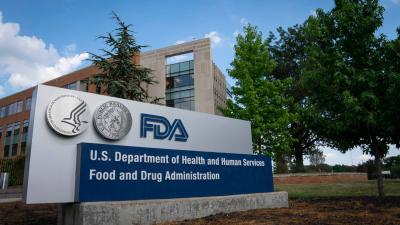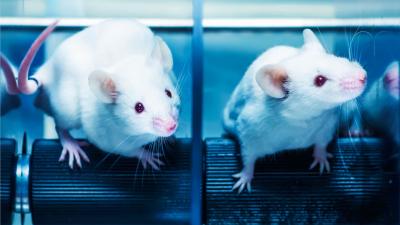USDA’s Shutdown of Its Animal Welfare Database: What It Means for the Physicians Committee’s Work to Modernize Science
UPDATE – Aug. 18, 2017: The database, now known as the Animal Care Public Search Tool, has been restored. However, while we welcome this news, it's clear that the database is very different than it used to be. For example, the USDA announced that it does not plan to publicly post enforcement actions. Instead, the agency plans to post "statistical summaries each calendar quarter." Considering the agency's woeful enforcement of the Animal Welfare Act, this news is troubling. The Physicians Committee will continue to pursue its lawsuit until the database and its information is fully restored.
On Feb. 3, 2017, without warning, the U.S. Department of Agriculture (USDA) shut down its publicly available animal welfare database, known as the Animal Care Information System. This will make it harder to find out how animals are used in laboratories and whether those facilities are complying with federal law. Without this information, it will be dramatically more expensive and time-consuming to track whether researchers are moving away from animal experiments and toward human-relevant studies.
The database included inspection reports of research facilities, testing laboratories, and other institutions regulated under the federal Animal Welfare Act and Horse Protection Act. The database also included research and testing facilities’ annual reports, which allowed the public to see how many Animal Welfare Act-covered animals were used, organized by species.
We have filed a federal lawsuit in an effort to restore the database.
In recent years, the Physicians Committee has used records from the USDA database to close a notorious primate research center, to end a university’s use of cats in a potentially painful medical training exercise, to support the eventual end of chimpanzee experimentation in the United States, and achieve many other advancements in medical research and training. Here are just a few key examples:
Harvard University’s New England Primate Research Center Closes
A 2011 Physicians Committee report detailed how a primate (later revealed to be a highly endangered cotton-top tamarin) was found dead in a cage at the Harvard facility after going through a machine that uses near-boiling water and caustic chemicals to wash cages. Later, we helped reveal other accounts of animal deaths and mistreatment, including a monkey dying after receiving an overdose of anesthetics and a cotton-top tamarin dying of dehydration because staff failed to place a water bottle in his cage. Records from these incidents provided grounds for a federal Endangered Species Act complaint because Harvard was negligently harming and killing cotton-top tamarins, a critically endangered species. In May 2015, Harvard closed the New England Primate Research Center for good.
University of Virginia Ends Use of Cats for Pediatrics Training
In 2010, the Physicians Committee launched a national campaign to end the use of live cats in the teaching of pediatrics residents at the University of Virginia (UVA). Physicians-in-training at UVA would repeatedly force breathing tubes down the throats of cats, a procedure that can cause tracheal bleeding, scarring, and severe pain. This was being done despite the widespread availability of human-relevant training methods modeled on human anatomy. Records obtained via the USDA database showed that the supplier of cats to UVA—Liberty Research in Waverly, N.Y.—habitually provided kittens with half as much space as required by the Animal Welfare Act during shipping to facilities like UVA. The company was cited 11 times in just an eight-month period for violating this section of the law. Sending these records to reporters helped generate media coverage and drive people to an online petition that gathered more than 185,000 signatures urging UVA to modernize its medical training. In 2013, UVA made the decision to end animal use and adopt the remaining cats to homes.
Chimpanzee Experiments End in the United States
In 2010, we discovered that the National Institutes of Health (NIH) was planning to transfer 186 chimpanzees from semi-retirement to a research facility in San Antonio, Tex. However, the USDA database revealed that the facility—the Southwest National Primate Research Center—had violated the Animal Welfare Act more than 30 times in five years. Using this information, we filed numerous federal petitions and brought the information to the attention of media outlets and members of Congress. That exposure was an important part of a broad campaign by the Physicians Committee and other organizations, which ultimately halted the chimpanzees’ transfer. It also served as the beginning of the end of chimpanzee experimentation in the United States. In 2015, after years of work, NIH announced that the last chimpanzees kept in reserve would be retired to sanctuary, along with the hundreds previously retired from experimentation by the agency. Had the database not been available, we would have been forced to file Freedom of Information Act requests that would taken months—possibly even years—to fulfill.
NASA Cancels Plans to Irradiate Monkeys
In November 2010, the National Aeronautics and Space Administration (NASA) announced plans to irradiate squirrel monkeys in a misguided attempt to learn the effects of deep-space radiation. Due to the basic anatomical and physiological differences between humans and squirrel monkeys (who weigh less than 2.5 pounds), these experiments were destined to fail. The Physicians Committee used records from the USDA database to reveal repeated violations of the Animal Welfare Act at the two laboratories where the experiments were to be conducted. These violations included multiple failures to ensure that procedures were in place to limit discomfort and pain in animals—a basic rule of the law. Using these documents and working with members of Congress, former researchers, and even a former NASA engineer who resigned her post in protest, we were able to halt the experiments before they began in little more than a year. The effort sent a strong message to NASA that it must more carefully consider the lack of scientific evidence for using animals in experiments.
These examples are just the tip of the iceberg. The Animal Care Information System is vital to understanding whether facilities regulated under the Animal Welfare Act are in compliance with the law and whether the USDA is carrying out its obligations under that same law.
We are working hard to restore the database.








